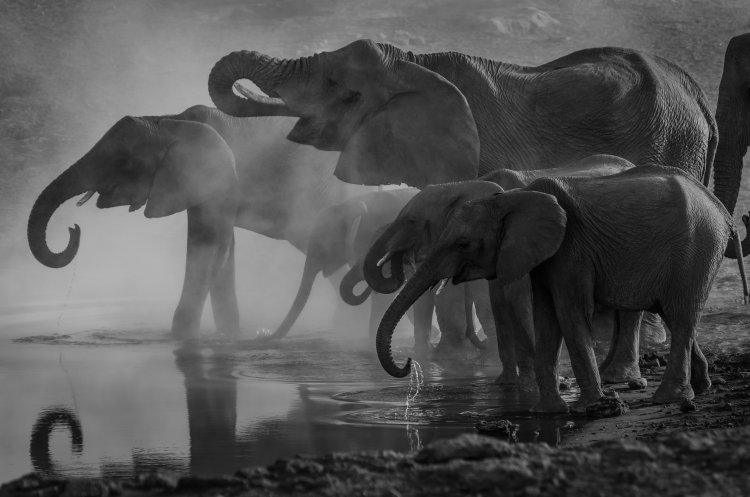Since ancient times, these animals have been perceived as a symbol of power and majesty, wisdom and tranquility, kindness and prosperity, prudence and discretion. Not every person can be proud of having such a set of qualities, yet elephants can. However, due to human activities elephants are on the verge of extinction. September 22 is an international ecological holiday – the World Elephant Day.
Problem of Extinction
Why are there fewer and fewer elephants every year? First of all, poaching is still rampant in African countries, even though killing an elephant is punishable by death in some of them. However, elephant tusks are still very valuable on the illegal markets. Experts believe that poaching is influenced by two parameters: the state of Asian commodity markets and the level of economic/social distress in the regions adjacent to the elephant habitat. Once the authorities succeed in stopping the demand for elephant ivory, the killing of these animals will decrease drastically. Second, it is important to understand that poachers are not the only ones to blame. For example, India has a very large population and people are gradually expanding their territory. As a result, tree-cutting is under way. Forced to look for other habitats, elephants leave their usual places and die of starvation.
Species Peculiarities
The elephant is a very rare and completely harmless animal. There are only three species left on Earth: African elephants, savannah elephants, and forest elephants. These animals live in the Southeast Asia and Africa (tropical forests and savannahs). They have very interesting physiological features. For example, elephants have special fat pads on their feet, which increase in size when the animal is moving. The elephant not only breathes, but also moves objects with its long trunk. The elephant's grasping function is complemented by its ability to drink with its trunk and bathe in hot weather: it takes in water and pours it into its mouth or pours it out of its trunk, just like in the shower.
Elephants' big ears are not given to them by accident: they contain capillaries, so this part of the body is responsible for thermoregulation in the animals. When elephants flap their ears, they cool down. It is interesting that African elephants, who live in a hotter climate than Indian elephants, have larger earflaps.
The tusks put elephants in danger of extinction, yet not all elephants have them. For example, in African elephants both sexes have tusks and in Indian elephants – only the males do. There is a forced mutation among elephants: elephants without tusks have gained an advantage in reproduction. Currently there are more than 700 elephants with the wnt10a gene mutation in Africa. They have no tusks and are all female. The nature protects these animals from human cruelty on its own.
Intellectual Abilities
Elephants are very intelligent animals. They have an ear for music and a musical memory, capable of distinguishing between three-note melodies. They even have their own musical preferences: they prefer listening to the violin and the low sounds of the bass or the horn. Elephants can recognize themselves in the mirror, just like some species of monkeys and dolphins. They are also able to use surrounding objects as tools to accomplish a particular goal. For example, tree branches as a remedy for flies and other annoying insects. By the way, the fear of mice is a common myth about elephants.
Elephants are very fond of communication. They live in groups of females and cubs; the oldest female in the family is the head, as she is considered the most experienced and wise. Males live apart, but also in groups. These animals are also able to track the location of their kin and join them.
Scientists are still debating whether elephants can feel emotions or not; however, it is known for a fact that they pay special attention to the deceased individuals, even performing certain rituals. Moreover, animals pay attention to the remains of skulls and tusks of their species.
Elephants are tactile animals. Do you know how elephants say hello? They stroke each other by touching each other with their trunks. That's the elephant hug. The older elephants can punish the younger ones with trunk or leg kicks or pushes. Tactile contact is especially important for mother and cub. While moving, the mother constantly touches the cub with her trunk, legs, or tail. If the baby elephant is tired, it snuggles up to its mother's front legs, and if it gets hungry, it will tell the mother by touching her.
Today, elephants are listed in the International Red Data Book and have the status of “endangered species.” Hunting these animals is strictly forbidden.
The article is based on open sources.
Фото на странице и на главной странице сайта: Richard Jacobs / Фотобанк Unsplash






















